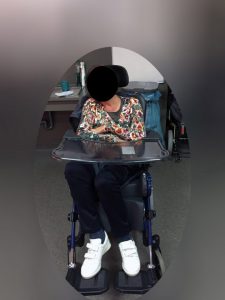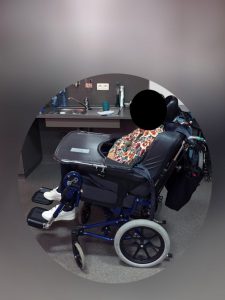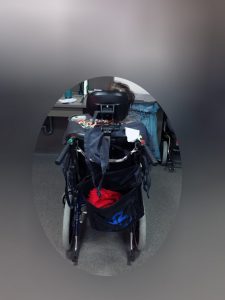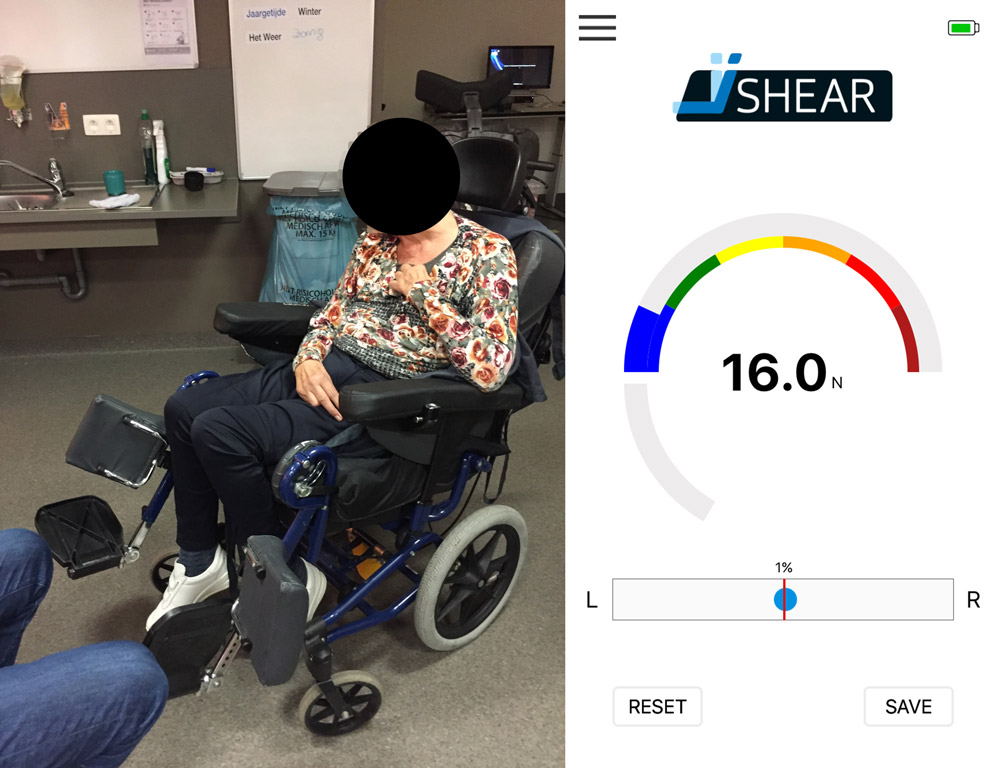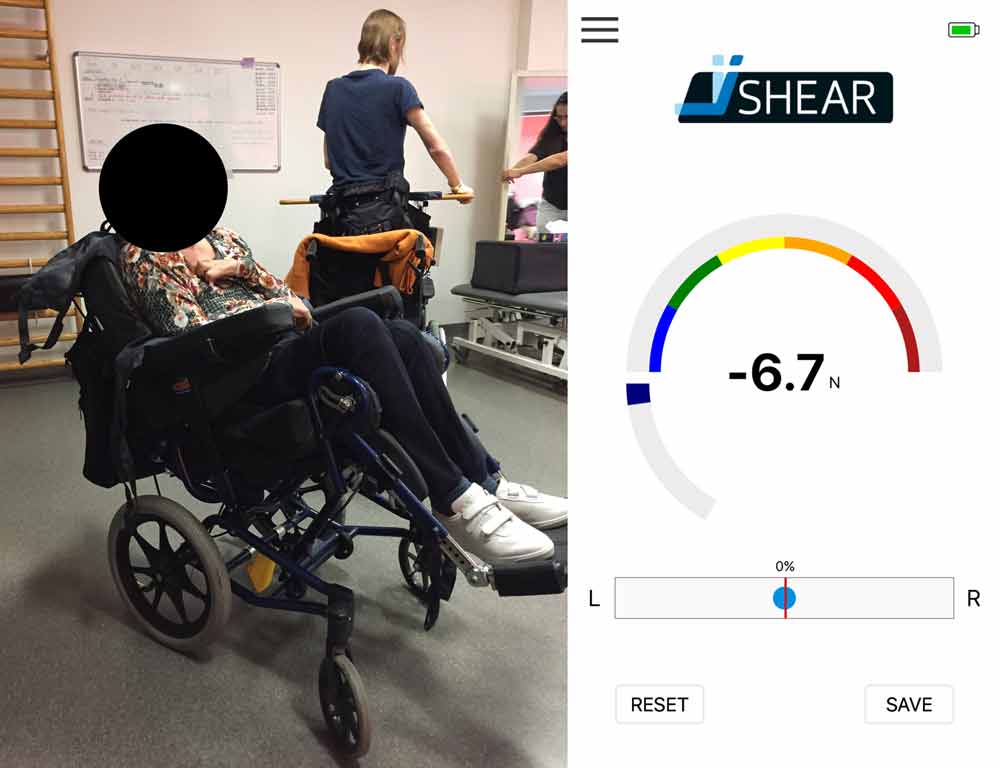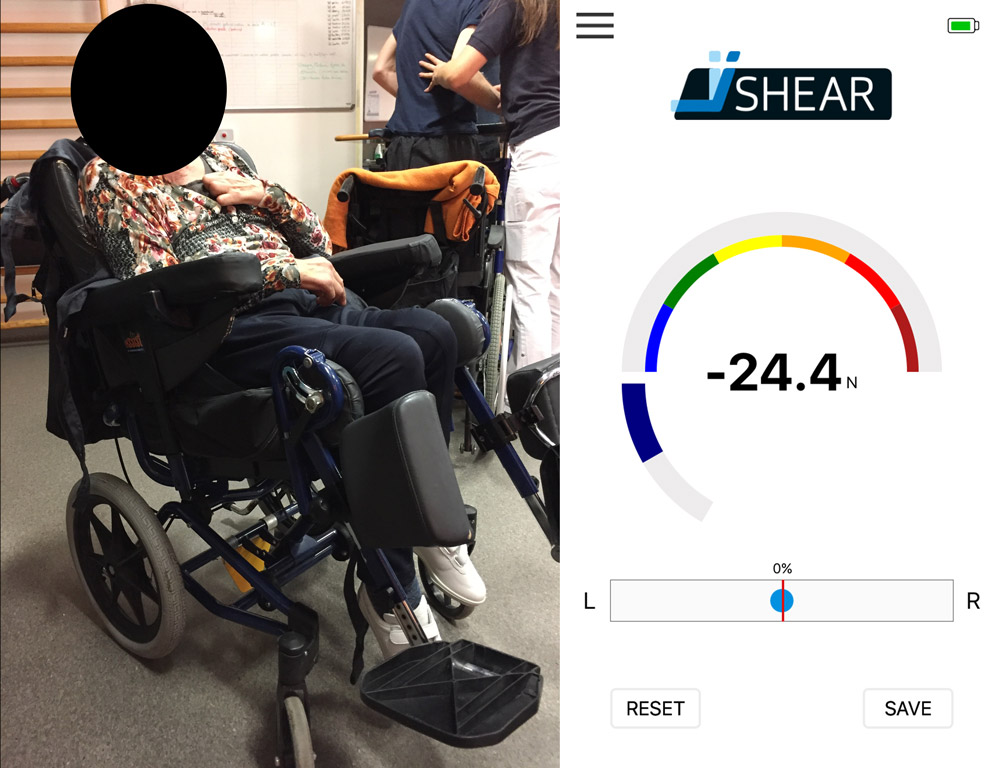Background
Client: Mrs. C.
- A 54 year old female with brain anoxia after swallowing incident.
- Vision right deficit
- Increased flexion tone
- Limited upper extremity function
- Impaired speech
- Is undergoing acute rehab at Ghent University Hospital, Belgium
Posture assessment:
- Pelvic obliquity left
- Posterior pelvic tilt
- Pelvic rotation to right
- Short hamstrings left and right
- Hip flexion left and right
- C- scoliosis convex right
- Foot extension left and right
- Torticollis right
- Fluctuating flexion tone
A clinical case by:
Lode Sabbe – Head of department Occupational Therapy at UZ Ghent – University Hospital Ghent
Bart Van der Heyden – Physical Therapist Private Practice ‘De Kine’ / SuperSeating
Carlos Kramer – International Educator Vicair
Ghent University Hospital – 2016
Problem
Mrs. C. complains of pain in her sacral region and has a high pressure ulcer risk. She slides when she is sitting upright and needs to be repositioned every hour when seated in her wheelchair. Her sitting time is currently 2 hours in the morning and 4 hours in the afternoon, the rest of the time she stays in bed.
We want to decrease the sliding tendency and decrease the need to reposition during sitting. No actions were taken to solve these specific problems before the start of the iShear Clinical Case Study.
Therapeutic goals
Can we decrease:
- Sliding tendency?
- Need to re-position during seating?
Can we make:
- Wheelchair adjustments to decrease shear?
Solving the problem
First we measured Mrs. C.’s Total Shear Force (TSF) in her initial wheelchair set-up. Then we adapted the wheelchair in different set-ups and measured the TSF to see which wheelchair set-up had the least TSF. We started with measuring in a normal resting position and measured the TSF with and without the use of the foot support. Then we tilted the wheelchair to his maximum and again measured the TSF with and without foot support. We also measured the TSF in different reclines of the back support with and without foot support.
Results
There is less TSF (-25 Newton) if we compare the maximum tilt to the normal resting position with foot support. If we take away the foot support, the TSF will go down another 25 Newton. The problem with this comparison of TSF, is that the muscle tone of Mrs. C. is not equal during both measurements.
When the muscle tone was equal, there was little difference in TSF if we compare a set-up with and without foot support.
We have also measured different seat to back angles, a 105 degrees angle had the least TSF.
Conclusion
With the iShear app we could measure what the different results were at different wheelchair setups. We measured that tilt-in-space decreased the TSF in comparison to a not tilted resting position. Removing foot supports initially did not change the TSF, but when Mrs. C. her muscle tone increased, there was a big difference in TSF between a set-up with foot support and no foot support.
The high tone in Mrs. C.’s leg muscles, unintentionally caused her foot to pull/push herself out of the chair (causing high TSF). By taking away her foot support, she could no longer pull/push herself out of the chair. Taking away the foot support did not increase the TSF.
Outcome over time
When she is more relaxed she can easily increase sitting time (depending on fatigue and tension).
Her intention is to keep the sitting position as optimal as possible, which is with a seat to back angle of a 105 degrees.

